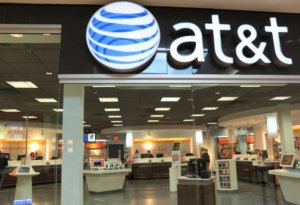AT&T Stock (NYSE:T) experienced a decline in pre-market trading on Friday after investment firm J.P. Morgan downgraded the telecom giant, citing concerns surrounding its wireless and broadband segments.
According to analyst Philip Cusick’s, the decision was influenced by recent statements from AT&T management, which lowered estimates for wireless in both May and June, as well as for broadband in June. Cusick believes that AT&T (NYSE:T) is facing increased pressure in its Mobility segment from competitors such as Verizon, T-Mobile, and cable providers, as well as ongoing challenges in its Consumer Wireline and Business Wireline divisions.
As a result of these concerns, Cusick downgraded AT&T (NYSE:T) shares from overweight to neutral and reduced the per-share price target from $22 to $17. He anticipates a slowdown in mobility growth, projecting a rate of only 2.5% in 2023 compared to 4.7% in 2021 and 3.5% in 2022. Cusick attributes this decline to AT&T’s decreasing postpaid gross share add, which has dropped from 32% in 2022 to an estimated 30% this year, while Verizon and T-Mobile remain competitive through promotional activities.
CFO Pascal Desroches of AT&T (NYSE:T) revealed in late June that the company had acquired approximately 300,000 new phone customers, falling short of the 476,000 predicted by Wall Street analysts.
Regarding fiber, Cusick anticipates that cable companies will regain market share as AT&T faces mounting deployment costs and considers reducing spending to address its debt. He stated that as the expansion of fiber locations slows, there may be downward revisions to IP-broadband subscriber additions. Despite a slowdown in fiber additions, copper losses are expected to continue, resulting in a decline in the overall broadband subscriber base.
Cusick also highlighted concerns over AT&T’s wireless and fiber growth businesses, rising interest rates, and uncertainties surrounding lead-sheathed cables. These factors, along with AT&T’s stock trading at a “record low” valuation of just 5.6 times EBITDA and yielding 7.3%, are expected to limit any significant rebound.
Regarding the liability associated with copper piper sheathing, Cusick stated that it is currently impossible to calculate the potential risk. However, given AT&T’s coverage of approximately 40% of homes in the U.S. through its local exchange carrier business and the presence of its long haul network, the company carries the largest exposure. Cusick believes this potential liability acts as an unquantifiable, long-term overhang on the stock, contributing to the reduction in the price target.
While AT&T continues to generate solid free cash flow, Cusick points out that the company has limited capacity to pay down debt or repurchase stock. The cash flow generated from DirecTV is expected to decline, with approximately $8 billion of the company’s $16 billion in free cash flow allocated to dividends. Coupled with a $2.4 billion payment for C-Band due by the end of this year and higher taxes, AT&T is left with a constrained amount to address its balance sheet.
Featured Image: Unsplash















